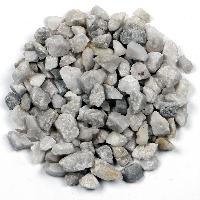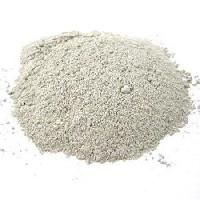
White Llimestone Powder
The Limestone Powder finds usage in various Industries like Power and Heat generating industry, Construction industry, Glass-making and Fodder industry, etc. The Limestone Powder provided by us is very well accepted all around, particularly because of its varied use and top quality. Limestone was also a very popular building block in the middle ages in the areas where it occurred since it is hard, durable, and commonly occurs in easily accessible surface exposures. Many medieval churches and castles in Europe are made of limestone. Beer stone was a popular kind of limestone for medieval buildings in southern England.
...more
quartzite powder
The parent rock for quartzite is quartz-rich sandstone. As sandstone becomes deeply buried, rising temperature will fuse the quartz grains together forming the extremely hard and weather-resistant rock quartzite. Like marble, quartzite comes in many colours, but when pure it is light-coloured. Quartzite tends to have a sugary appearance, and when broken the fractures cut through the sand grains, not around them as with a sandstone.
...more
plaster of paris mineral
Plaster of Paris is made up from gypsum. Plaster of Paris contains the calcium sulfate hemihydrates .This is prepared by heating the gypsum which contains calcium sulfate dihydrate to a temperature about 150oC. Certain additives are added when heating. Plaster of Paris is a fine, white powder. When it is hydrated it can be used to mould things, and when allowed to dry, it hardens and retains the shape it is set to before drying. When added water to plaster of Paris (PoP), it will re-form into gypsum, Plaster of Paris (PoP) can be moulded into different shapes when it is moistened, but gypsum does not have that property, Gypsum is a naturally occurring mineral whereas Plaster of Paris is manufactured, It is used to make plaster, cement, to do ornamental work on ceiling, for room interiors, movie sets, architecture, sculptural arts, in medicine, etc.
...more
Natural Dolomite
Dolomite was named for the French mineralogist Deodat de Dolomieu. The mineral dolomite is commonly found in deposits of a sedimentary rock called dolostone. There are two types of materials often called dolomite, a true chemically uniform calcium magnesium carbonate with the chemical formula CaMg(CO3)2, and a dolomitic limestone, which is just an irregular mixture of calcium and magnesium carbonates. Dolomite is believed to have formed by replacement of some of the calcium in a calcium carbonate limestone deposit with magnesium, while the sediment was undergoing lithification, being converted from layers of dead clam and other sea animal shells into crystallized calcite or calcium carbonate. The resultant dolomite mineral, CaMg (CO3)2 is a true double salt. The calcium and magnesium ions in dolomite exist in separate layers in the crystal matrix. Dolomite has a calcium layer, then a carbonate layer, then a magnesium layer then a carbonate layer
...more
crushed quartzite

Calcined Magnesite Powder
The mineral magnesite which has been reduced to a powder by heating, i.e. calcined. It is used as a dietary supplement for cattle and sheep to prevent hypo magnesemia. Used for topdressing pasture with a similar objective. pure and high quality Calcined Magnesite Powder that is white in colour. We package Calcined Magnesite Powder in 25 or 50 Kg HDPE bag that ensures its safe delivery.
...more
Ball Clay Powder
Ball clay is a rare mineral found in very few places around the world. The name of “Washed Ball Clay” refers to the type of clay having high plasticity and which is rich in organic matter mainly consisting of unprocessed Kaolin. It also is sometimes referred to as plastic clay. Ball clays are sedimentary in origin. Ancient rivers and streams washed kaolinite (formed from decomposed granite) from its parent rock. As the streams flowed from upland area they mixed with other clay minerals, sands, gravels and vegetation before settling in low-lying basins to form overlaying seams of ball clay. Ball clays usually contain three dominant minerals: from 20-80% kaolinite, 10-25% mica, and 6-65% quartz. In addition, there are other 'accessory' minerals and some carbonaceous material (derived from ancient plants) present.
...more
Transportation and Logistics
Be first to Rate
Rate This